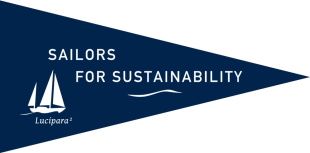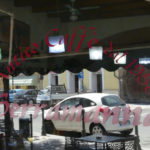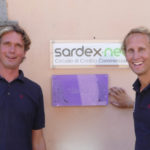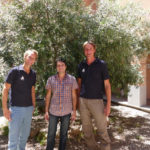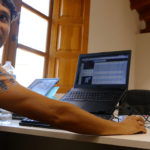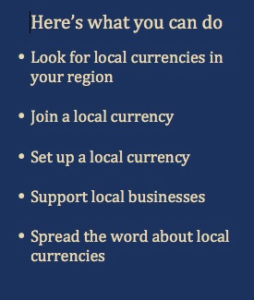Sardex: a Local Currency for a Circular Economy? (ITA)
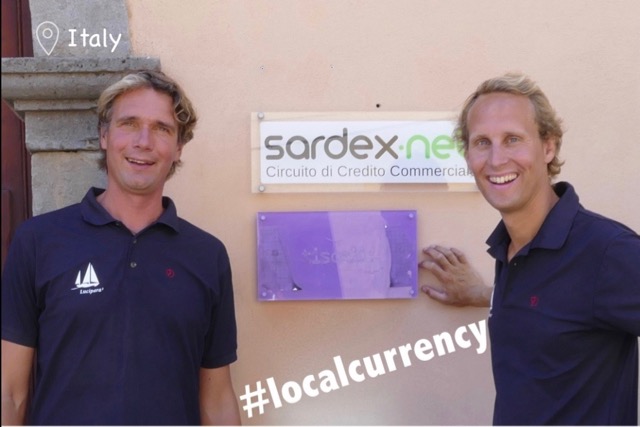
We sail to Sardinia to visit the local currency Sardex. Could this be a more sustainable monetary alternative suitable to support a circular economy?
Contributes to achieving the following UN Sustainable Development Goals:
It is 2008. The financial crisis has broken out on Wall Street. Banks are saved from bankruptcy by governments and new loans are very hard to come by. The effects are also felt in Sardinia: the credit flow dries up and unemployment is on the rise. “Why do we have to suffer from a lack of money caused by a crisis on Wall Street?” five young men from the Sardinian village of Serramanna ask themselves. In response, they set up the Sardex, a local currency for businesses in Sardinia.
Does the Sardex also have sustainability benefits? To find out, we sail to the Italian island, leave our boat at anchor and hit the road for a visit.
Do You Accept Sardex?
After arriving in Serramanna, we have lunch at a bar next to the church. “Look, they accept Sardex” Ivar points to a sticker at the entrance. Eager to find out if we could use this currency to pay for our lunch, we head to the office of Sardex around the corner. A modest sign at the gate reveals that we are at the right address, but there is no cash machine or exchange office. Instead, we find Lorenzo Pinna welcoming us on behalf of the company Sardex.
A Simple Idea
Lorenzo works at the international relations department and explains that the founders of Sardex had a clear goal: to give Sardinian companies access to a local currency so they can fulfil their potential. But how? Lorenzo answers with an example. “Imagine a photographer and a painter. The photographer wants to have his studio painted, but does not have enough euros. The painter doesn’t have enough work. If they both become members of Sardex, the photographer can pay the painter in Sardex. To do so, the photographer can get a credit in Sardex. If he pays the painter 100 Sardex, the balance of his Sardex account goes to -100, while the painter gets +100. Now the painter can spend this amount to buy peaches from a local farmer, for example. And the farmer can, in turn, use Sardex to hire the photographer.”
Aha, so the Sardex only exists digitally! This makes it possible for participants to have a negative amount in their Sardex account, which eliminates an important barrier to doing business. And since companies can spend the Sardex exclusively to pay other participating companies, spending in Sardex increases regional trade and employment.
Issuing Money, Is That Allowed?
While the idea behind Sardex is simple, it triggers many questions. Does the government allow the company to issue its own currency? Lorenzo: “Yes. Sardex is legally permitted as a means of digital payment under Italian law. VAT is also paid on the transactions, in euros.” All transactions are recorded digitally, so VAT cannot be avoided. It explains why the tax authorities are also happy. They, too, benefit from the increased Sardinian productivity.
To keep things simple, the Sardex is worth as much as the euro, but cannot be bought or exchanged for euros. “Sardex works complementary to the euro,” Lorenzo explains. “It makes transactions possible that otherwise would not happen for of a lack of euros.”
Who Plays the Bank?
We also wonder who is in control of the amount of Sardex in the system. Lorenzo continues: “Here at Sardex HQ we set limits on the positive and negative balance that a participating company can have. Those limits depend on the size of the company. The sum of all the accounts of all participants is always zero.” So participants cannot abuse the system by only drawing credit? “No, we keep an eye on that. And we help companies with negative balances to get extra customers. We link these to other Sardex participants, for example those with a large positive balance.”
We join Lorenzo behind a computer screen and get a live demonstration of how the Sardex works. As they take the privacy of participants seriously, Lorenzo shows us a dummy account. We see different debit and credit transactions, as well as the total account balance. It looks just like a regular internet banking account, except that it is in Sardex.
No Interest
What is missing is an interest rate. “That’s right, because we neither pay nor charge interest.” No interest? Lorenzo continues: “Sardex is just a means of exchange that stimulates transactions in the local economy. It is not intended to store value or to obtain interest-driven capital growth.” As a result, there is no need for more and more Sardex to meet interest obligations. That is a difference with the “ordinary” money system, where exponential growth of the total amount of money in circulation is always necessary to meet interest obligations.
Sardex Is Successful
Sardex HQ charges participating companies a registration fee and an annual fee to cover costs. Despite this, the Sardex has proven to be successful. More than 4,000 companies now participate. Since its inception, some €140 million in turnover has been made in Sardex. Sardex as a privately owned company meanwhile employs around 60 people.
As trust in the local community is important for success, the region where the Sardex can be used is limited to Sardinia. Yet due the success of Sardex, similar money systems have been set up in other Italian regions such as Rome and Piedmont. And the Sardex will also become available to private individuals, meaning that anyone can soon pay for their lunch in Sardex. Provided they live on the island, of course.
Is Sardex Sustainable?
Back at the anchorage we reflect on the sustainable aspects of Sardex. It increases local services and production activities, so less transport is required and employment on the island is stimulated. Those are clear and quantifiable benefits. In addition, the Sardex strengthens cooperation within and trust in the community. Although the effects thereof cannot be measured easily, they should not be neglected.
Also, the Sardex makes the local economy more resilient against shocks of future financial crises, because it solves a shortage of euros and it is not possible to speculate with the Sardex. Finally, the absence of interest also has an important advantage: growth is not a necessity. Therefore, a currency like the Sardex seems to fit better with the concept of a circular economy than the “ordinary” money system.
In conclusion, the Sardex is a simple, local idea with important sustainability benefits. We look forward to its expansion and wonder which region will be the next to bring a similar currency in circulation?
Related Sustainable Solutions

Circular Materials (NZL)
Waste does not exist in nature. Which circular materials can we use instead of plastic, so we can reduce human-produced waste?

Food Recue (NZL)
We meet organisations that lead the way in reducing food waste and learn that all of us have a responsibility to tackle this global challenge.

Fair Fashion (ALB)
In Albania, we meet Pitupi, which makes “people-to-people”clothing. Environmental and social values are as least as important as financial profit.

Local Currency (ITA)
We sail to Sardinia to visit the local currency Sardex. Could this be a more sustainable monetary alternative suitable to support a circular economy?

Mondragon Cooperatives (ESP)
At Mondragon, employees are owners, salaries and profits are fairly distributed, there is solidarity among cooperatives, and education is held in high esteem.
